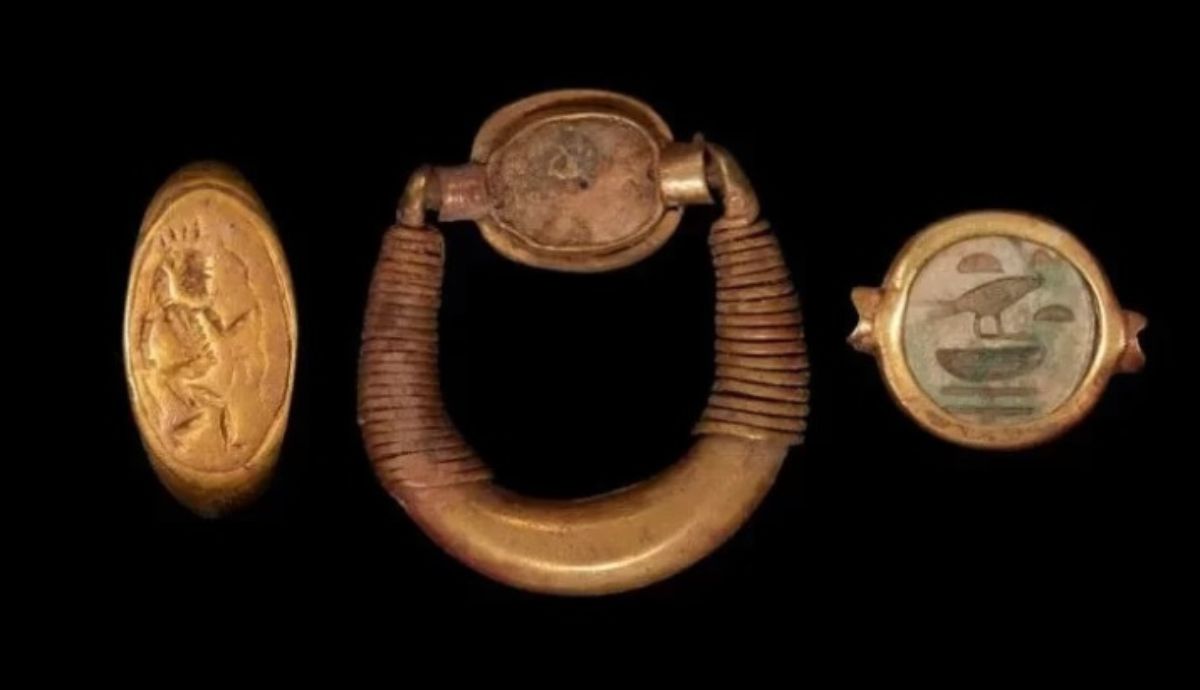
Ancient gold jewelry found by the archaeologists is actually 3,500 years old. Finds comprise three rings and one necklace. This finding includes a collaboration between the University of Cambridge and an Egyptian-English archaeological team. The Tell El-Amarna Necropolis was also the burial ground for the city of Amarna, constructed in 1346 BC.
“Ancient gold jewelry includes three gold rings” – The Ministry

The ministry also spoke about the discovery of the ancient gold jewelry. “The find, discovered in the ancient city of Amarna, comprised three gold rings. One of the rings has a decoration of the ancient Egyptian Bes, god of fun. Also, the second includes a phrase in hieroglyphics that means a lady of the two lands”, the ministry said in a statement.
An archaeological expedition known as the Amarna Project has been investigating the Amarna Necropolis since 2005. The investigation also had the support of researchers from the University of Cambridge, leading archaeological missions at Tel El-Amarna since 1977. During excavations in a northern desert cemetery, archaeologists discovered the burial site of a young woman.
Archaeologists found the woman wrapped in textile and plant fiber cloth. She also wore a necklace of petal-shaped pendants and three rings made of gold and steatite (soapstone) on her finger. Her burial spot is amongst several other burials in a small shaft-chamber tomb. It dates to the 18th Dynasty (1550-1292 BC), the reign of Akhenaten.
The Cambridge Archaeologist Anna Stevens About the Discovery

Dr. Anna Stevens, from the Department of Archaeology at the University of Cambridge, said: “Her burial is located at the Amarna North Desert Cemetery. This is in the low desert west of the North Tombs. It includes a small number of burial shafts and tombs, as well as pit graves.”
Amarna houses 25 cemeteries carved into the rock of its eastern mountain. It also has religious inscriptions for senior statesmen and priests, buried during Akhenaten‘s reign. There is also another royal cemetery 15 km east of the city. That’s where the archaeologists discovered the ancient gold jewelry.

Akhenaten was an ancient Egyptian Pharaoh and the tenth ruler of the Eighteenth Dynasty. As a Pharaoh, Akhenaten is noted for abandoning Egypt’s traditional polytheism and introducing Atenism, or worship centered around Aten.
One of the rings has a decoration of the image of Bász, who together with his female companion. Bász, represented an ancient Egyptian deity, worshipped as the protector of households. This includes mothers, children and childbirth. God later represented the protector of all good and the enemy of all evil.










